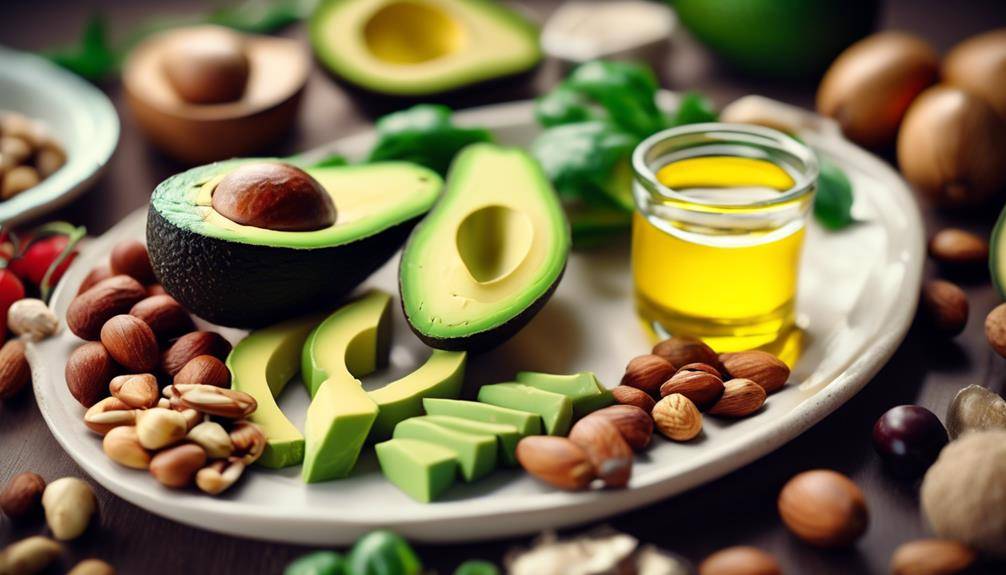The Best Ketogenic Diet Principles Vs Paleo Diet

Ketogenic Diet Principles Vs Paleo Diet; Are you looking to improve your overall health and well-being? Have you considered trying a ketogenic diet or a paleo diet? These two popular eating plans have gained a lot of attention in recent years for their potential benefits. But what exactly are the principles behind each of these diets, and how do they differ?
In this discussion, we will explore the key aspects of the ketogenic diet and the paleo diet, including their macronutrient composition, approach to carbohydrate intake, focus on fat consumption, protein sources and recommendations, and the allowed and restricted foods. By understanding the principles of each diet, you can make an informed decision on which one may be the right fit for you. So, let’s delve into the details and discover which approach aligns better with your goals and lifestyle.
Ketogenic Diet Overview
The ketogenic diet is a low-carbohydrate, high-fat eating plan that has gained popularity for its potential benefits in weight loss and improving certain health conditions. The primary goal of the ketogenic diet is to induce a state of ketosis in the body, where it primarily burns fat for fuel instead of carbohydrates. By significantly reducing carbohydrate intake and increasing fat consumption, the body switches its primary energy source from glucose to ketones.
One of the main benefits of the ketogenic diet is its effectiveness in weight loss. When the body is in a state of ketosis, it becomes more efficient at burning fat, leading to steady and sustainable weight loss. Research has shown that the ketogenic diet can also help improve insulin sensitivity and blood sugar control, making it an effective dietary approach for managing type 2 diabetes.
Another advantage of the ketogenic diet is its potential to enhance cognitive function. The brain is fueled by glucose, but it can also utilize ketones as an alternative energy source. By following a ketogenic diet, the brain can receive a constant supply of ketones, which may improve mental clarity and focus.
Incorporating ketogenic diet recipes into your meal planning can be an enjoyable way to stick to the diet and ensure you are getting the right balance of nutrients. Recipes based on healthy fats like avocados, coconut oil, and olive oil, along with moderate protein sources such as meat, fish, and eggs, can help you maintain ketosis while enjoying delicious meals.
Paleo Diet Overview
To understand the Paleo diet, imagine eating like our ancestors did thousands of years ago. The Paleo diet, also known as the Caveman diet or Stone Age diet, is based on the idea that our bodies are best adapted to the foods our ancestors consumed during the Paleolithic era. This diet aims to mimic the eating habits of our hunter-gatherer ancestors, who primarily consumed lean meats, fish, fruits, vegetables, nuts, and seeds. Here are some key points to know about the Paleo diet:
- No processed foods: The Paleo diet restricts the consumption of processed foods, including refined sugars, grains, and vegetable oils. These foods were not available during the Paleolithic era and are believed to contribute to modern health issues.
- Focus on whole foods: The main emphasis of the Paleo diet is on whole, unprocessed foods. This includes fresh fruits and vegetables, grass-fed meats, wild-caught fish, and nuts and seeds. These foods are nutrient-dense and provide a wide range of vitamins, minerals, and antioxidants.
- Elimination of dairy and legumes: The Paleo diet excludes dairy products and legumes, including beans, lentils, and peanuts. This is because these foods were not commonly consumed during the Paleolithic era and may cause digestive issues in some individuals.
- Emphasis on high-quality fats: The Paleo diet promotes the consumption of healthy fats, such as avocados, coconut oil, and olive oil. These fats are rich in monounsaturated and polyunsaturated fats, which have been linked to various health benefits.
- Meal planning: Planning meals on the Paleo diet involves incorporating a variety of lean proteins, colorful fruits and vegetables, and healthy fats. It is important to prioritize whole foods and avoid processed ingredients.
Macronutrient Composition
As we shift our focus to the macronutrient composition of the Paleo diet, it is important to understand the balance of proteins, fats, and carbohydrates that make up this ancestral eating approach. The Paleo diet emphasizes consuming whole, unprocessed foods that our ancestors would have eaten during the Paleolithic era. This means that the diet primarily consists of lean meats, fish, fruits, vegetables, nuts, and seeds.
In terms of macronutrient ratios, the Paleo diet is often characterized by a higher intake of protein and fat, and a lower intake of carbohydrates compared to the standard Western diet. This is because our ancestors relied on animal protein and healthy fats for sustenance, while carbohydrates were scarce and often came from fruits and vegetables.
The higher protein content of the Paleo diet can have several metabolic benefits. Protein is known to increase satiety, reduce appetite, and boost metabolism. It also plays a crucial role in building and repairing tissues, supporting immune function, and maintaining healthy hormone levels.
The emphasis on healthy fats in the Paleo diet is also beneficial for metabolic health. Healthy fats, such as those found in avocados, nuts, and olive oil, provide a steady source of energy, promote brain function, and help absorb fat-soluble vitamins.
Approach to Carbohydrate Intake
If you’re following the Paleo diet, your approach to carbohydrate intake will focus on consuming carbohydrates from whole, unprocessed sources. This means that you will avoid processed and refined carbohydrates that have been stripped of their nutrients. Instead, you will opt for carbohydrates that are rich in fiber, vitamins, and minerals. Here are some key points to consider when it comes to your carbohydrate intake on the Paleo diet:
- Carbohydrate restrictions: While the Paleo diet does not set specific limits on carbohydrate intake, it does encourage you to prioritize vegetables, fruits, and nuts as your main sources of carbohydrates. These foods are nutrient-dense and provide a steady supply of energy without causing a rapid spike in blood sugar levels.
- Glycemic index: The Paleo diet emphasizes consuming carbohydrates with a low glycemic index. The glycemic index is a measure of how quickly a carbohydrate raises blood sugar levels. Foods with a low glycemic index are digested and absorbed more slowly, which helps to maintain stable blood sugar levels and prevents energy crashes.
- Whole, unprocessed sources: On the Paleo diet, you will focus on consuming carbohydrates from whole, unprocessed sources. This includes vegetables like sweet potatoes, carrots, and leafy greens, as well as fruits like berries and apples. These foods provide a wide range of nutrients and are less likely to cause inflammation or digestive issues compared to processed carbohydrates.
- Balancing macronutrients: While carbohydrates are an important part of the Paleo diet, it is also important to balance your macronutrient intake. This means including sources of protein and healthy fats in your meals to ensure that you are getting a well-rounded nutrient profile.
- Individual needs: It’s important to note that everyone’s carbohydrate needs may vary depending on factors such as activity level, goals, and overall health. It’s best to listen to your body and adjust your carbohydrate intake accordingly.
Focus on Fat Consumption
Are you curious about how the Paleo diet focuses on fat consumption? Well, the Paleo diet emphasizes the consumption of high-quality fats, such as those found in avocados, nuts, seeds, and oils like olive and coconut oil. This approach to fat consumption is in line with dietary guidelines that recommend the inclusion of healthy fats in our daily diet.
The Paleo diet encourages the consumption of fats that are rich in omega-3 fatty acids, which are known for their numerous health benefits. These fats can be found in fatty fish like salmon, mackerel, and sardines. Omega-3 fatty acids have been shown to reduce inflammation, improve heart health, and support brain function.
In addition to focusing on fat quality, the Paleo diet also promotes a balanced intake of fats in relation to other macronutrients. While fat is an essential part of the diet, it is important to ensure that it is consumed in moderation and in combination with an adequate intake of protein and carbohydrates.
It is worth noting that the Paleo diet does not advocate for excessive fat consumption. Instead, it encourages the consumption of fats from natural sources and discourages the consumption of processed fats, such as those found in fried foods, processed snacks, and margarine.
Protein Sources and Recommendations
Now let’s talk about protein sources and recommendations for both the ketogenic and paleo diets. For the keto diet, good sources of protein include meat, poultry, fish, and eggs. On the other hand, the paleo diet encourages the consumption of lean meats, seafood, eggs, and plant-based proteins. It is important to note that the recommended protein intake varies depending on factors such as age, gender, and activity level.
Protein Sources for Keto
To maintain a ketogenic diet, you can choose from a variety of protein sources that are low in carbohydrates and high in fat. Here are some options to consider:
- Fatty cuts of meat: Opt for cuts like ribeye steak, pork belly, and chicken thighs, which are higher in fat compared to leaner cuts.
- Fish and seafood: Salmon, mackerel, and sardines are excellent sources of protein and omega-3 fatty acids.
- Eggs: They are not only high in protein but also contain healthy fats. Enjoy them scrambled, fried, or boiled.
- Full-fat dairy: Cheese, butter, and heavy cream are rich in both protein and fat. Just make sure to choose full-fat options.
- Plant-based proteins: While most plant-based proteins are higher in carbohydrates, some options like tofu, tempeh, and seitan are relatively low in carbs and can be included in a ketogenic diet.
Protein Sources for Paleo
For those following a Paleo diet, there are plenty of protein sources available that align with the principles of this eating plan. The Paleo diet focuses on consuming whole, unprocessed foods that our ancestors would have eaten. When it comes to protein, there are several options to choose from. One of the main sources of protein for Paleo followers is lean meat, such as grass-fed beef, poultry, and game meats.
Seafood, including fish and shellfish, is also a great choice as it is high in protein and healthy fats. Eggs are another excellent source of protein and can be consumed in various ways. Additionally, nuts and seeds provide protein along with other essential nutrients. Incorporating these paleo protein options into your diet can help meet your protein recommendations for Paleo while maintaining the principles of this eating plan.
Recommended Protein Intake
One of the key factors to consider when following a Paleo diet is the recommended protein intake and the variety of protein sources available. Protein is essential for maintaining and repairing tissues in the body, and it also plays a role in hormone production and immune function. To ensure you meet your protein requirements on a Paleo diet, here are some optimal protein intake recommendations:
- Aim for 0.7-0.9 grams of protein per pound of body weight.
- Include a variety of protein sources such as lean meats, poultry, fish, eggs, and dairy (if tolerated).
- Incorporate plant-based protein sources like legumes, nuts, and seeds.
- Opt for organic, grass-fed, and pasture-raised sources whenever possible.
- Consider supplementing with protein powder if needed, but prioritize whole food sources.
Allowed and Restricted Foods
Foods that are allowed and restricted vary between the ketogenic diet and the paleo diet. The ketogenic diet focuses on high fat, moderate protein, and low carbohydrate intake. It allows foods that are high in healthy fats such as avocados, olive oil, coconut oil, and nuts. Animal proteins like meat, poultry, and fish are also allowed. However, the ketogenic diet restricts foods that are high in carbohydrates, such as grains, legumes, and most fruits. Starchy vegetables like potatoes and corn are also off-limits due to their high carbohydrate content.
On the other hand, the paleo diet focuses on consuming whole, unprocessed foods that our ancestors would have eaten. It allows foods such as lean meats, fish, eggs, fruits, vegetables, nuts, and seeds. The paleo diet restricts processed foods, grains, dairy products, legumes, and added sugars. This means that foods like bread, pasta, cheese, milk, beans, and refined sugars are not allowed.
Both diets have their own unique set of allowed and restricted foods. While the ketogenic diet allows high-fat foods and restricts carbohydrates, the paleo diet focuses on unprocessed foods and restricts grains, dairy, and processed foods. It is important to note that individual variations exist within each diet, and individuals may choose to modify the rules to fit their specific needs and preferences.
Health Benefits and Potential Risks
With an understanding of the allowed and restricted foods in both the ketogenic diet and the paleo diet, it is important to now explore the potential health benefits and risks associated with these eating patterns.
Here are some key points to consider:
- Long term effects: Both the ketogenic and paleo diets have shown promising results in terms of long-term health benefits. The ketogenic diet, which focuses on high fat and low carbohydrate intake, has been found to improve insulin sensitivity and reduce inflammation, which are both important factors in preventing chronic diseases such as diabetes and heart disease. On the other hand, the paleo diet, which emphasizes whole, unprocessed foods, has been associated with weight loss and improved metabolic markers.
- Weight loss potential: Both diets have been shown to be effective for weight loss. The ketogenic diet, due to its low carbohydrate intake, promotes fat burning and can lead to rapid weight loss. The paleo diet, on the other hand, encourages the consumption of lean proteins and vegetables, which can help control hunger and lead to sustained weight loss over time.
- Potential risks: While both diets have their benefits, they also come with potential risks. The ketogenic diet, for example, may lead to nutrient deficiencies due to its restrictions on certain food groups such as fruits, whole grains, and legumes. The paleo diet, although it emphasizes whole foods, may also limit the intake of certain nutrients like calcium and vitamin D due to its exclusion of dairy products.
- Individual variation: It’s important to note that the effects of these diets can vary from person to person. Some individuals may thrive on a ketogenic diet, while others may find it unsustainable or experience negative side effects such as fatigue or constipation. Similarly, the paleo diet may work well for some individuals, but may not be suitable for others based on their specific health needs and goals.
- Consultation with a healthcare professional: Before embarking on any new diet, it is always recommended to consult with a healthcare professional or registered dietitian who can provide personalized guidance and ensure that the diet is safe and appropriate for your individual needs.
Choosing the Right Diet for You
When choosing the right diet for you, it is crucial to consider your individual health needs and goals. Personal preferences play a significant role in determining the sustainability of a diet in the long term. It is important to choose a diet that aligns with your taste preferences, cultural background, and lifestyle. This will make it easier for you to adhere to the diet and maintain it over time.
Another important factor to consider is the long-term sustainability of the diet. Some diets may offer quick results in the short term, but they may not be sustainable in the long run. It is essential to choose a diet that promotes a balanced and varied intake of nutrients to ensure your body’s optimal functioning and overall health.
Both the ketogenic diet and the paleo diet have their own benefits and limitations. The ketogenic diet focuses on high-fat, low-carbohydrate intake, aiming to put your body into a state of ketosis. On the other hand, the paleo diet emphasizes whole foods and eliminates processed foods, grains, and dairy products.
To determine which diet is right for you, consider your personal preferences and lifestyle. If you enjoy a diet that includes a variety of whole foods and allows for occasional indulgences, the paleo diet may be a good fit. However, if you prefer a higher fat intake and can sustain a low-carbohydrate diet, the ketogenic diet may be more suitable.
Ultimately, the key to choosing the right diet lies in finding one that you can maintain in the long term. Remember, sustainable changes in your eating habits are more likely to lead to lasting results and improved overall health.
Ketogenic Diet Principles Vs Paleo Diet; Frequently Asked Questions
Can the Ketogenic Diet Be Followed by Vegetarians or Vegans?
Yes, the ketogenic diet can be followed by vegetarians or vegans. There are vegetarian keto options and vegan keto recipes available that focus on plant-based fats and proteins while limiting carbohydrates.
How Does the Paleo Diet Differ From Other Popular Diets Like the Mediterranean Diet or the Atkins Diet?
The Paleo diet differs from other popular diets like the Mediterranean diet or the Atkins diet in several ways. It focuses on consuming whole, unprocessed foods and excludes grains, legumes, and dairy products.
Are There Any Potential Side Effects or Risks Associated With Following a Ketogenic Diet Long-Term?
Long-term effects and risks of following a ketogenic diet include nutrient deficiencies, kidney stones, and increased risk of heart disease. It may not be suitable for vegetarians or vegans due to its high animal product consumption.
Can the Paleo Diet Be Modified to Accommodate Individuals With Specific Dietary Restrictions, Such as Gluten Intolerance or Lactose Intolerance?
You can modify the paleo diet to accommodate your dietary restrictions. For gluten intolerance, focus on gluten-free grains and avoid processed foods. For lactose intolerance, choose dairy alternatives or lactose-free dairy products.
How Long Does It Typically Take for the Body to Enter a State of Ketosis When Following a Ketogenic Diet?
When following a ketogenic diet, your body typically enters a state of ketosis within a few days. This metabolic state has numerous benefits, including improved weight loss, increased energy levels, and enhanced mental clarity.
Conclusion
In conclusion, both the ketogenic and paleo diets have their own principles and approaches to nutrition. While the ketogenic diet focuses on low carbohydrate intake and high fat consumption, the paleo diet emphasizes whole, unprocessed foods. Both diets have shown potential health benefits, but it is important to choose the one that aligns with your individual goals and preferences. Consulting with a healthcare professional can help determine which diet is the right fit for you.








